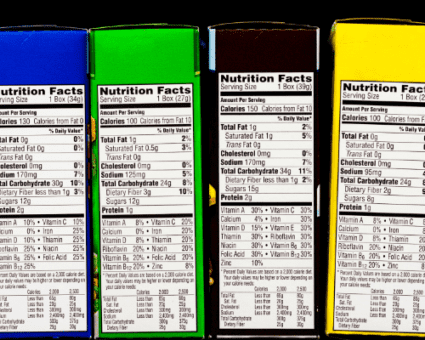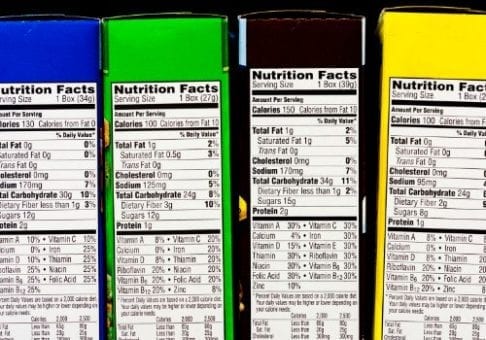How many minutes of running would a person have to do to burn off a Big Mac? Or a salad, for that matter? A new study out of the UK by Amanda Daley and her colleagues wants more businesses to post that information front and center for consumers. For example, a label might say, “Calories in this chicken require 45 minutes of running to burn.” This kind of labeling is called PACE, or physical activity calorie equivalent.
The first issue with this approach is that it assumes eating less is always better and will automatically lead to desired outcomes (more on that below). Another issue is that any published numbers are merely an estimate. The answer to X amount of exercise is needed to burn Y food has a tremendous range. It depends on multiple variables such as the size of the person, their individual metabolism, their hormones, gut bacteria, etc. Moreover, calorie counts for specific foods—even on your box of breakfast cereal—may be off by up to 20% per FDA guidance. Rather than acknowledge the lack of conciseness, food labeling encourages a one-size-fits-all approach. In an interview with CNN, Daley claimed that reducing food intake by 100 calories per day, along with increased exercise, could decrease rates of “obesity.” This view of calories in = calories out is overly simplistic.

In the US, the Food and Drug Administration requires businesses with over 20 locations that sell restaurant-type food to list the calorie counts for each menu item (but it does not require any labeling about exercise). The assumption is that if consumers have more nutritional information, they will eat less. The evidence supporting that assumption, however, is scant. This paper by VanEpps et al. reviewed 16 different studies that explored if such information influences customer choices. Of the 16 studies reviewed, only three showed consumers choosing lower-energy (AKA lower-calorie) menu items. Of the remaining 13 studies, three had mixed results, and 10 showed no influence of food labeling on consumer choices.
It is unclear if adding exercise to the labeling process will make any difference. Daley and her colleagues conclude that PACE labeling makes a difference compared to no labels at all. However, the press release issued by her employer, Loughborough University, acknowledges that the studies reviewed for the paper had a small number of participants and did not take place in real-life settings. Conversely, the studies reviewed by VanEpps et al. did take place in real-life restaurants, where the impact on food choices was predominantly nonexistent.
Ultimately, food labeling is yet another version of a policy that is intended to help the public but upholds diet culture in the following ways:
1. It prioritizes calories above all else.
When food labels emphasize calories and the amount of exercise needed to burn off that food, it prioritizes energy intake and expenditure as the most important aspect of nutrition. By this logic, very different foods—like almonds, ice cream, avocados, salads with several ingredients, and French fries—may calculate as equivalent. It does not acknowledge that each food is nutritionally unique.
2. Food is to be burned off with exercise.
When food is viewed purely as fuel, it is no wonder that exercise is treated similarly. How many personal trainers make comments like, “Just 20 more! Gotta make up for all that Halloween candy!”
3. The purpose of exercise is to earn the right to eat.
Not only “should” food be burned off, but diet culture teaches us that we don’t have the right to eat what we’d like if we haven’t preemptively exercised (or have plans to do so very soon). This is a dangerous thought process; people with disordered eating often eat less than their body needs if they aren’t able to get to the gym daily. They don’t feel they deserve that food.
4. Weight is entirely within our control.
When consumers are faced with labels declaring they can “work off” something they eat, it feeds the misconception that our weight is purely the result of our individual habits. It is a long-standing myth that we can choose any weight we’d like and achieve it with enough willpower. Instead, our bodies are in charge. When we meddle (via diets), it interferes with our ability to trust ourselves/our bodies.
5. Weight is a proxy for health.
Food labeling seeks to make people eat less, with the assumption that they will lose weight and then have better health. However, there is no evidence that weight gain causes poor health, or that weight loss causes better health. Weight can certainly be associated with different health conditions, but that is not the same as causation, and it doesn’t take into account other potential reasons for health conditions. Economic status, racism, sexism, and weight stigma can all cause poorer health outcomes. BMI (body mass index) is an extremely flawed measure of health.
Like other demonstrations of diet culture, food labeling is a slippery slope for those with, or predisposed to develop, eating disorders. However, too often this is not appreciated by researchers; the prevalence of eating disorders is often underestimated. In the interview with CNN regarding the recent research paper, Daley acknowledged questions about eating disorder risk with food labeling, “but said there was no evidence that PACE labels cause eating disorders, adding: ‘We’re interested in the population as a whole.’”
About the Author
Barbara Spanjers, MS MFT is a therapist and wellness coach who helps people feel more attuned with food and their body.
Sources
Labelling foods with the amount of physical activity needed to burn off calories linked to healthier choices (2019, December 10). Retrieved from https://www.lboro.ac.uk/media-centre/press-releases/2019/december/labelling-foods-amount-of-physical-activity-needed
Guy, J. (2019, December 11). Exercise advice on food labels could help reduce obesity, researchers say. Retrieved from https://www.cnn.com/2019/12/11/health/physical-activity-food-labels-wellness-scli-intl-gbr.
Daley A.J., McGee E., Bayliss S., Coombe, A., & Parretti, H.M. (2019). Effects of physical activity calorie equivalent food labelling to reduce food selection and consumption: Systematic review and meta-analysis of randomised controlled studies. Journal of Epidemiology and Community Health. Published Online First: 10 December 2019. doi: 10.1136/jech-2019-213216 Retrieved from https://jech.bmj.com/content/early/2019/12/19/jech-2019-213216
UCLA Health (2016, Spring). BMI a poor measure of health. U Magazine. Retrieved from https://www.uclahealth.org/u-magazine/body.cfm?id=17&action=list&issueref=217.
VanEpps, E. M., Roberto, C. A., Park, S., Economos, C. D., & Bleich, S. N. (2016). Restaurant menu labeling policy: Review of evidence and controversies. Current Obesity Reports, 5(1), 72–80. doi:10.1007/s13679-016-0193-z. Retrieved from https://www.ncbi.nlm.nih.gov/pmc/articles/PMC5124489/
